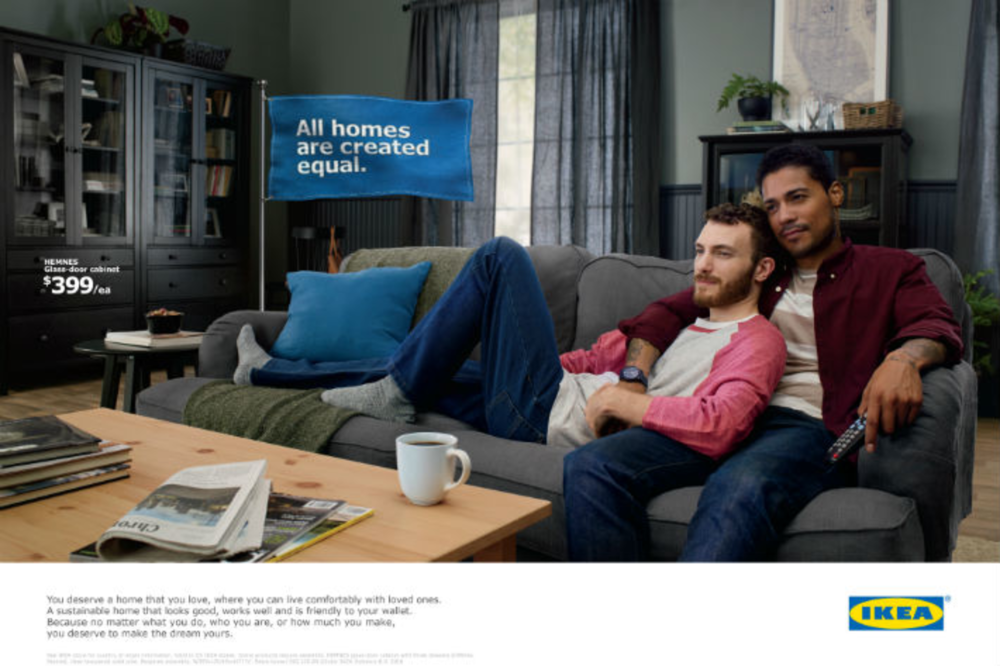Have you ever had a situation where you have a great brand story to tell but everyone thinks they already know it? That was IKEA’s (Ikea’s) challenge.
The brand has been in the U.S. for more than 30 years. And despite having only 42 locations nationwide, there is a surprisingly high awareness of the name. But while the brand has rich furniture and home furnishings for people in every life stage, Ikea was having trouble penetrating into existing and new markets—mainly because most people associate Ikea with “starting out” or college furniture.
We needed a way to overcome this “false familiarity” Americans have with the Ikea brand. Many people think they know us, but they don’t really understand the offer. Our mission is to improve the everyday lives of people by providing quality, stylish, sustainable home solutions at affordable prices. We want more Americans to understand how and why Ikea can do this and how we can make everyday life at home accessible and achievable for everyone. To communicate this brand value, we launched the “We Help You Make It” campaign.
We started creating the campaign where we usually do at Ikea—by talking to our consumers. We worked with Mindswarms to conduct “at home” qualitative research. We asked people to video themselves in their own homes and to answer a series of questions, including what are some of their challenges with their home, what is their dream home project, and what do they love or value about the Ikea brand?
From that beginning, we worked with Ogilvy to determine how we could align our brand mission to the things in society that people really care about right now. We were looking for a cultural tension that would make sense to most people. During our campaign research, we uncovered a lot of news stories, surveys, and other data that supported the idea that life at home still hadn’t returned to normal since the 2008 recession. In fact, it became apparent that people were living a new normal—one where it was harder to “make it” than ever before.
This is where we found a place for our brand mission and our objective to enable people to live that better everyday life at home. We took these ideas into testing and found that this approach really resonated both with current customers, as well as with other consumers in the category who might have interest in our offering. We also leveraged a different testing model. We used political modeling testing, which allowed us to identify our base, swing, and opposition targets. This helped us determine to whom we should communicate our message. We learned what was important to our customers today, as well as which elements of the campaign resonated with them the most.
In addition, this type of modeling allowed us to develop a target composite—one that we’re trying to attract to the brand. We call it the “Life Improvers” category. These are people who span across different ages, incomes, and education brackets, but they all have an optimistic, “can do” attitude toward life and want to make things better.
For the launch of the campaign, we decided to use a multi-platform approach. We started by engaging in a conversation around the American dream. We partnered with The Economist Group on a research study to see what that means to people today and how it has changed over time. We also started a conversation with our coworkers in locations across the U.S., engaging them on the same topic. Finally, our paid media campaign leveraged TV, magazine, and digital insertions with key media partners, including a spread in InStyle’s inaugural Home and Design issue.
Our next steps are taking the campaign platform and infusing it into our retail seasonal internal and external communications, ensuring that the tone of the campaign translates into each consumer touchpoint. We’ll continue to activate on the research and coworker communications throughout the year at key periods.
We just started running the campaign in market in September, so we are eagerly awaiting results; although, social media commentary suggests that consumers are reacting to the message and enjoying the brand approach.
We know this is just step one. There is a rich brand story to tell, and we are planning on sharing those stories so that our Life Improvers know we are here to partner with them and enable them to live a better everyday life in their homes.
About the author:
Christine Whitehawk is the U.S. external communications manager for IKEA U.S. (Ikea). She is a champion of integrated marketing communications, working closely with insights and research to develop motivating communications content for social, digital, and traditional channels in the U.S. for the Ikea brand. Prior to Ikea, she worked at advertising agencies in the Philadelphia area.







